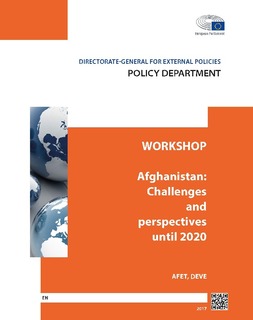| dc.contributor.author | Strand, Arne | |
| dc.date.accessioned | 2018-01-04T08:22:27Z | |
| dc.date.available | 2018-01-04T08:22:27Z | |
| dc.date.issued | 2017-01-01 | |
| dc.identifier | oai:www.cmi.no:6153 | |
| dc.identifier.citation | European Parliament, Directorate-general for external policies policy department | |
| dc.identifier.isbn | 978-92-846-0598-9 | |
| dc.identifier.uri | http://hdl.handle.net/11250/2475319 | |
| dc.description.abstract | Afghanistan is faced with a number of contextual challenges which are likely to influence implementation of the Afghan National Peace and Development Framework, and thereby the European Union (EU) Multi- Annual Indicative Programme 2014-2020. Despite massive investments and improvements in areas such as education, health, rural development and infrastructure, so far these have had very limited impact on reducing the overall poverty rate. Increased insecurity, a weakened economy and a high degree of internal displacement, return and urbanisation are likely to pose additional challenges to a fragmented government and an administration with limited implementation capacity. | |
| dc.language.iso | eng | |
| dc.publisher | European Parliament, Directorate-general for external policies policy department | |
| dc.relation.uri | https://www.cmi.no/publications/6153-afghanistan-challenges-and-perspectives-until | |
| dc.title | Afghanistan: Challenges and perspectives until 2020 | |
| dc.type | Research report | |
| dc.identifier.doi | 10.2861/446665 | |
